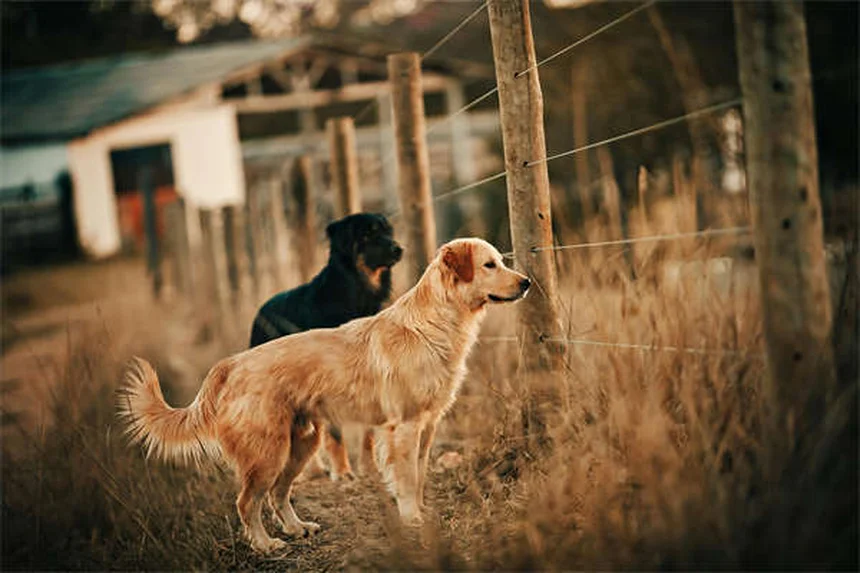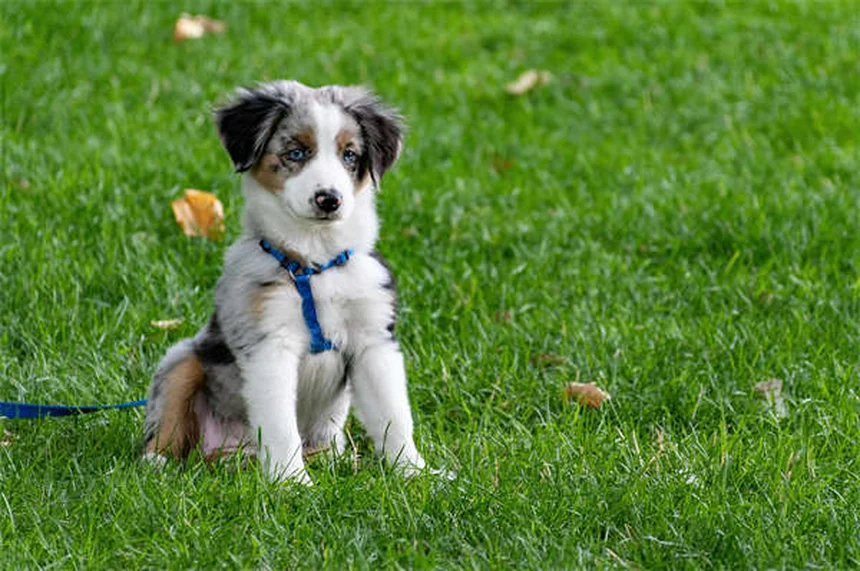Want to teach your dog to bark on command? The answer is: Yes, you absolutely can train your dog to bark when you ask! While excessive barking can drive you crazy, teaching your pup to speak on cue is actually one of the most fun and useful tricks you can master together. I've trained dozens of dogs to bark on command, and let me tell you - there's nothing quite like showing off this party trick to your friends!The key is to make this training intentional and controlled. As certified dog trainer Beth McGonigal says, We don't want to create a little yappy monster. In this guide, I'll walk you through the exact steps professional trainers use to teach dogs to bark only when asked. You'll learn how to capture your dog's natural barking instinct and turn it into a reliable command response - without encouraging nuisance barking. Let's get started!
E.g. :Can Rabbits Be Leash Trained? 5 Surprising Facts You Need to Know
Advertisement
- 1、Understanding Why Dogs Bark
- 2、Step-by-Step Bark Training
- 3、Customizing Your Commands
- 4、Training Timeline Expectations
- 5、Troubleshooting Common Issues
- 6、The Science Behind Canine Communication
- 7、Breed-Specific Barking Behaviors
- 8、The Human Role in Barking Problems
- 9、Advanced Training Techniques
- 10、The Bigger Picture of Dog Ownership
- 11、FAQs
Understanding Why Dogs Bark
Barking: Annoyance or Useful Tool?
Let's be honest - excessive barking drives most dog owners crazy. But here's the thing: barking isn't always bad! Your furry friend's vocalizations can actually serve important purposes like warning you about strangers or potential dangers.
Jonathan P. Klein, a certified dog trainer from Los Angeles, puts it perfectly: "Many owners actually want their dogs to bark when something's wrong in the neighborhood." The challenge? Teaching them to bark only when appropriate - not whenever they feel like it!
The Party Trick Potential
Imagine this: You're hosting friends, and with a simple command, your dog lets out a perfect "woof!" on cue. Instant crowd-pleaser! Beth McGonigal, a dog behavior expert, compares it to teaching her dog Jefferson to give kisses on command - fun when you want it, but not something you'd want all day long.
Here's a quick comparison of barking scenarios:
| Type of Barking | Good or Bad? | Example |
|---|---|---|
| Alert barking | Good | Warning about a stranger at the door |
| Commanded barking | Good (when controlled) | Performing a trick for treats |
| Demand barking | Bad | Barking because dinner is 5 minutes late |
Step-by-Step Bark Training
 Photos provided by pixabay
Photos provided by pixabay
Finding Your Dog's Bark Button
Ever wonder what really gets your dog excited enough to bark? For some, it's the doorbell. Others go crazy for their favorite toy. Here's the golden rule: we want to capture that natural reaction and put it on command.
Try this: Hold up your dog's favorite ball just out of reach. When you see them getting ready to bark, say "speak!" right before they vocalize. The moment they bark, reward them! This timing is crucial - we're building that mental connection between the word and the action.
The Power of Positive Reinforcement
Now, you might be thinking: "Won't this just teach my dog to bark all the time?" Great question! The secret lies in only rewarding commanded barks. If they bark without you saying "speak," simply ignore it. Consistency turns this from a potential nuisance into a fun trick.
Klein suggests another clever method: "Bounce a ball behind a baby gate where your dog can see but not reach it. The frustration often triggers barking - perfect training moment!" Reward with playtime after they respond to your command.
Customizing Your Commands
Beyond "Speak"
Who says you have to use boring old "speak"? Get creative! Maybe "sing for your supper" fits your dog's personality better. McGonigal reminds us: "Dogs don't understand English - they learn whatever sound you consistently pair with the action."
Some fun command ideas:- "Alert!"- "Tell me!"- "Who's there?"- Your dog's name followed by "report!"
 Photos provided by pixabay
Photos provided by pixabay
Finding Your Dog's Bark Button
Consider having multiple bark commands for different situations. A sharp "alert!" could mean serious business, while "sing!" might be for playful moments. This helps your dog understand context, making training more effective.
Think about it: wouldn't you prefer your dog to understand the difference between "there's an intruder" and "it's time to show off for grandma"?
Training Timeline Expectations
How Fast Will My Dog Learn?
Here's the truth: every dog learns at their own pace. Some chatty breeds might pick it up in days, while more reserved dogs could take weeks. McGonigal notes: "Since barking comes naturally, most dogs catch on faster than with complex tricks."
Three key factors affect training speed:1. Your dog's natural vocal tendencies2. Your consistency with commands3. The value of your rewards (pro tip: use high-value treats!)
Maintaining the Behavior
Ever trained your dog perfectly, only to have them "forget" everything a week later? Klein explains why: "Dogs aren't being stubborn - we're often the inconsistent ones." Regular short sessions (5-10 minutes) work better than occasional marathon trainings.
Try this schedule:- Week 1: Daily 5-minute sessions- Week 2: Every other day- Week 3+: Weekly refreshers
Troubleshooting Common Issues
 Photos provided by pixabay
Photos provided by pixabay
Finding Your Dog's Bark Button
Uh-oh - now your dog won't stop barking! Sound familiar? This usually means we've accidentally reinforced demand barking. The solution? Start teaching "quiet" with equal enthusiasm.
Here's how:1. Wait for a natural pause in barking2. Say "quiet!" and immediately reward3. Gradually increase the quiet time before rewarding
What Never to Do
Yelling "SHUT UP!" at a barking dog? Big mistake. Klein warns: "You're just joining the noise party." Instead, identify and remove the barking trigger when possible. No attention (positive or negative) for unwanted barking!
Remember: training should be fun for both of you. If you're getting frustrated, take a break. Your dog will sense your mood and respond better to positive energy. Happy training!
The Science Behind Canine Communication
More Than Just Noise
You know that adorable head tilt your dog does when you talk to them? That's actually them trying to understand you! Dogs have evolved over thousands of years to communicate with humans in ways no other animal can. Their barks, whines, and growls each serve different purposes - it's like they've developed their own language just for us!
Recent studies show dogs can distinguish between happy barks and distressed ones. Their brains light up differently when hearing various vocalizations, proving they're not just making random noise. Next time your pup barks at the mailman, remember - they're having an actual conversation in their own way!
The Emotional Connection
Ever notice how your dog's bark changes when you come home versus when a stranger approaches? That's because dogs experience emotions similar to a human toddler. They feel joy, fear, excitement, and even jealousy!
Here's something fascinating: dogs often mirror their owner's emotional state. If you're anxious about storms, your dog might start barking at thunder too. It's not just training - it's an emotional bond that goes both ways. Who's training whom in this relationship?
Breed-Specific Barking Behaviors
Nature vs. Nurture in Vocal Dogs
Some breeds just can't help being chatterboxes! Herding dogs like Collies were bred to control livestock with their voices, while hounds use distinctive baying sounds to track prey. Your dog's DNA plays a huge role in how and why they vocalize.
Check out these vocal breed comparisons:
| Breed Type | Typical Bark Frequency | Common Bark Triggers |
|---|---|---|
| Guard Dogs (German Shepherds) | Moderate-High | Strangers, unusual noises |
| Companion Dogs (Pugs) | Low-Moderate | Attention seeking, playtime |
| Hunting Dogs (Beagles) | Very High | Scents, small animals, boredom |
Working With Your Dog's Instincts
Instead of fighting your dog's natural tendencies, why not work with them? A Border Collie who barks at running children might excel at agility training where vocal encouragement is welcomed. Channeling that energy into appropriate outlets can reduce nuisance barking dramatically.
I've seen terrier owners have great success with "find it" games that satisfy their dog's need to vocalize while hunting. It's about understanding what your dog was born to do, then giving them a job that fits!
The Human Role in Barking Problems
How We Accidentally Train Bad Habits
Here's an uncomfortable truth: most barking issues start with us. That time you laughed when your puppy barked at a vacuum? Or gave them attention when they demanded food? We often reinforce behaviors without realizing it.
Think about your daily routine. Do you check the window every time your dog alerts? That teaches them barking gets results! Consistency is key - if you sometimes reward barking and sometimes ignore it, you're creating confusion. Dogs thrive on clear rules.
The Neighborhood Effect
Ever notice how one barking dog can set off the whole block? Dogs are social creatures who communicate over distances. Why do you think your dog barks back when others start? It's like a canine version of social media - they're joining the conversation!
This explains why urban dogs often bark more than country dogs. More stimuli means more "conversations" to join. The solution? Creating a calm environment where your dog doesn't feel the need to respond to every distant bark.
Advanced Training Techniques
Taking It to the Next Level
Once your dog masters basic bark commands, you can get really creative! Service dogs learn to bark for help in emergencies, while some therapy dogs use quiet "whisper barks" to greet hospital patients. The possibilities are endless when you build on that foundation.
I taught my Labrador to ring a bell with his nose when he needs to go out - it started with teaching him to bark at the door! Now we have a silent system that keeps the neighbors happy. Small steps can lead to big improvements in communication.
Technology Meets Training
Modern tools can help manage barking when you're not home. Vibration collars (not shock collars!) can remind your dog to be quiet without punishment. Interactive cameras let you speak to your dog remotely, reinforcing training even when you're at work.
Just remember - technology should assist training, not replace it. Nothing beats the bond you build through face-to-face interaction and positive reinforcement. Your dog wants to please you, they just need clear guidance!
The Bigger Picture of Dog Ownership
Barking as Part of the Package
Let's keep it real - if you wanted complete silence, you should've gotten a goldfish! Dogs bark, just like kids laugh and birds sing. The goal isn't to eliminate all vocalization, but to create harmony where your dog's voice enhances rather than disrupts your life.
Some of my favorite dog memories involve barking - the excited greetings when I come home, the playful demands for one more game of fetch. These moments remind me why I love having a dog, noise and all!
Building Mutual Understanding
At its core, bark training is about learning to understand each other. Your dog learns what you want from them, and you learn to interpret their needs. This two-way communication is what transforms a pet into a true companion.
Next time your dog barks, instead of frustration, try curiosity. What are they telling you? How can you respond in a way that strengthens your bond? That shift in perspective makes all the difference in creating a happy home for both of you.
E.g. :Easy, Dog Trick: How to Teach your Dog to Speak or Bark When you ...
FAQs
Q: Why would I want to teach my dog to bark on command?
A: Teaching your dog to bark on command might seem counterintuitive at first, but there are actually several great reasons to do it! First, it gives you control over their barking - when they learn to bark only when asked, they're less likely to bark excessively at random times. Second, it's an impressive trick that shows off your training skills (and your dog's intelligence!). Third, as trainer Jonathan P. Klein points out, many owners actually want their dogs to alert them to potential dangers. By teaching "speak," you're building a foundation for more advanced protective training. Plus, it's just plain fun to have this trick in your back pocket for entertaining guests!
Q: What's the best way to get my dog to bark during training?
A: The secret is finding what naturally triggers your dog's barking - we call this "finding their bark button." For most dogs, it's one of three things: 1) Showing them their favorite toy but keeping it just out of reach, 2) Ringing the doorbell or knocking on a surface, or 3) Having a family member pretend to be a stranger outside. I recommend starting with the toy method since it's the easiest to control. Hold up that ball or treat, wait until you see them getting ready to bark, then say "speak!" right before they vocalize. The timing is crucial - you want them to associate the command with the action. Pro tip: Keep training sessions short (5-10 minutes) to prevent frustration!
Q: How long does it usually take to train a dog to bark on command?
A: Every dog learns at their own pace, but most pick up the "speak" command within 2-4 weeks of consistent training. According to behavior consultant Beth McGonigal, "Because barking is a self-rewarding behavior, dogs tend to pick up on it a little more quickly." Chatty breeds like Beagles or Terriers might learn in just a few days, while quieter dogs like Basenjis could take longer. The three factors that affect training speed are: 1) How vocal your dog naturally is, 2) How consistent you are with commands and rewards, and 3) How motivating your treats are (use their absolute favorites for best results!). Remember - short, daily sessions work better than occasional long ones.
Q: Can I use any word for the bark command?
A: Absolutely! While "speak" is the most common command, you can get creative here. Dogs don't understand English - they just learn to associate certain sounds with actions. Some fun alternatives I've used successfully include "alert," "tell me," "who's there?" or even silly phrases like "sing for your supper!" Trainer McGonigal shares that she has special phrases for different dogs. The key is choosing a word or phrase you'll remember to use consistently. Pro tip: If you might want to train different types of barks later (like an alert bark vs. a playful bark), consider using different commands from the start.
Q: What if my dog starts barking too much after learning this command?
A: This is a common concern, but easily fixed! If your dog starts overusing their new skill, it simply means you need to balance it with a "quiet" command. Here's how: When they bark without being asked, say "quiet" in a calm voice and wait for silence. The second they stop (even if just to take a breath), reward that silence with a treat and praise. Gradually increase the quiet time before rewarding. As trainer Klein warns, "Don't yell 'shut up' - you're just joining the noise party." Instead, be patient and consistent with rewarding the behavior you want. Within a week or two, your dog will learn that both "speak" and "quiet" earn rewards when done correctly!

